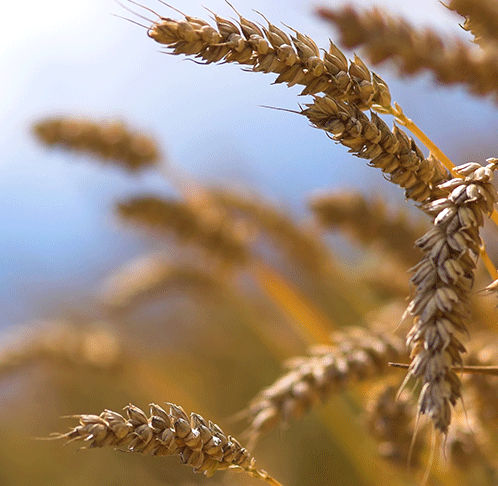Ontario’s 2016 winter wheat crop
IMPLICATIONS OF A LARGE HARVEST
IT’S A MEGA-YEAR for Ontario wheat acreages. In 1981, harvested acres of winter wheat in the province totalled 504,000, and about 20 years later in 2002, it wasn’t much different (580,000). However, a few years later it started to increase, hitting over one million acres four times between 2006 and 2013. In 2016, 975,000 acres of wheat were harvested.

On the yield front, the average Ontario winter wheat yield was 51.6 bushels per acre (bu/ac) in 1981, and reached nearly 84 bu/ac last year. This year, the harvest was as high as 90 bu/ac.
“Over the last few years, more acres of wheat have been planted in Ontario due to good prices and more farmers diversifying their rotation and sticking to their rotation,” says Todd Austin, manager of wheat marketing at Grain Farmers of Ontario, about long term wheat acreage trends. “In both 2013 and 2014, wet fall weather delayed soybean harvest so that farmers could not get the wheat in, but last year they were able to.”
Several classes of winter wheat are planted in Ontario, but Austin says farmers mostly plant soft red winter wheat (about 80
per cent) because it provides the most marketing opportunities.
Dana Omland, grain merchandising manager for Ontario at Ceres?Global Ag?Corp. in Guelph, says there is also less production risk with this class of wheat which makes it an attractive option.
INTERNATIONAL GROWTH
It’s not only Ontario that is increasing wheat production. China, India, Russia, Australia, Ukraine, France, Germany, and the U.S. are all planting larger amounts of wheat, Austin notes. India and China don’t export much — Russia, however, does.
Reuters news agency reported in June that Russia’s grain crop could reach 110 million metric tons this year, the second-largest harvest ever and up from 105 million in 2015.
“Russia is selling a fair amount into North Africa and the Mid-East,” says Austin. “They tend to offer good prices and have better proximity to those end markets. The ruble has devalued against the U.S. dollar, so it’s cheap in U.S. dollars.”
Ontario has not exported much winter wheat in past years compared to domestic markets, only a little to the U.S. and a little overseas, but about half the soft red winter harvest is now exported, Omland notes.
The prices farmers will get this year for wheat will depend on a few factors. Austin explains that over the last two years, global wheat prices were lower than Ontario’s and that they were weak in general due to a large worldwide inventory. In addition, he says wheat trades in sympathy with corn and the large U.S. corn production last year meant lower prices for corn and wheat.
“It’s a poor year in the U.S. this year for wheat, but they still have a lot in their inventory from last year,” Austin adds. “Yes, demand grows each year, but so does global supply. Lower prices due to these factors can stimulate demand, but the question is when does that happen? Commodity prices are cyclical and the low points will be low enough that buyers come back, demand surges and prices go up, but that’s likely a while away.”
WEATHER IMPACTS
Canada Grains Council president Tyler Bjornson notes there has been some downgrading of wheat production volumes and quality in the European Union (EU) this year, mostly in France, due to flooding. Omland believes this could result in more export demand to the markets that France usually services, such as North Africa and Mexico.
However, volumes are high globally, and Bjornson agrees with Austin that there will be a softening of price. He also observes that, “whenever there is intense global competition, normally we see a rise in technical barriers to trade, customers demanding tighter provisions, and more scrutiny for mycotoxins,
allergens, and other quality-related issues. We’re hopeful that doesn’t come to pass, those strategies to winnow out higher-quality wheat, but it may happen this year with the large volumes out there. The good news is that demand looks to be strong, especially in the feed market, because wheat is becoming competitive there with corn.”
Omland agrees. He notes that because of the drought in Ontario this summer, some traders are anticipating the corn yield to be lower by 25 bu/ac.
“This reduced supply of corn has the potential to soak up any excess of Ontario wheat,” he notes. “Three months ago, traders were wondering where it might go, but this corn harvest drop will likely mean more potential for wheat to work its way into the feed market.”
In terms of how much wheat to plant this fall, Austin advises growers to stick to their crop rotation to get the full benefits of all that provides. “The other thing is to look for price jumps in the market and take advantage of them,” he says. •






















